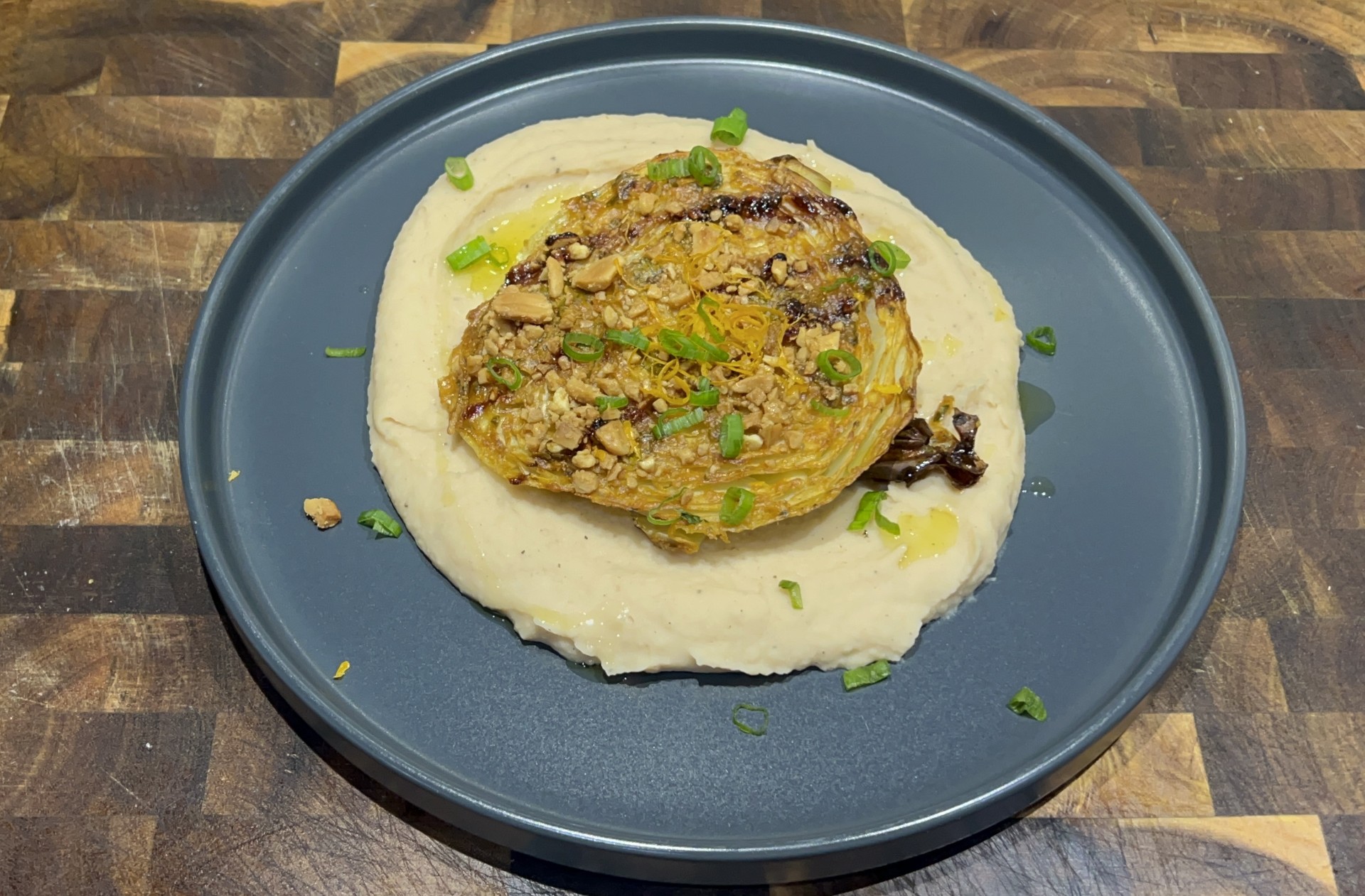It’s all about cabbage!

Kitchen Vegan Chronicles
Cabbage has been a staple in my diet since I was a little girl. I like it best when prepared raw in a simple salad made with carrots, tomatoes, cucumbers and tossed in a sweet vinaigrette dressing. This simple cabbage salad usually accompanies just about every Jamaican meal, especially Sunday dinners. My fond childhood memories of cabbage got me thinking about the health benefits of cabbage and the many ways it is prepared and consumed across various ethnic cultures.
A global assessment of cabbage utilization in ethnic cuisines reveals just how flexible an ingredient cabbage is and the depth and dimension its flavour profile brings to a meal. From side dishes such as sweet, crunchy coleslaws, based in North America’s Southern cuisine and kimchi, a fermented Korean condiment to entrees such as Atakilt Wat, a savoury Ethiopian dish made with cabbage, potatoes and carrots and Asian-influenced stir fries, cabbage has been on the plates of man for thousands of years. The domestication of cabbage, from its ancestral plant, the wild cabbage, by the Celts, was truly a blessing from the culinary gods!
But what makes cabbage so appealing? The answer can be found back in the time of the European exploration of the new world when cabbage became a necessary accompaniment for long ocean voyages because of its nutritional content. On these trips, cabbage was often used as a source of vitamin C to prevent diseases such as scurvy. During this time, additional medicinal applications included the use of brined cabbage, similar to sauerkraut, to treat wounds and prevent gangrene. These extensive uses confirm that cabbage is king and a super vegetable and nutritional powerhouse.
There are seven main types of cabbage from the Brassica oleracea family of the cruciferous vegetables with green cabbage being the most common. Green cabbage is, typically, utilized raw or cooked and used in classic dishes such as coleslaw, stuffed cabbage, and my favorite Jamaican cabbage salad. There is also red cabbage, which is similar to green cabbage in texture but differs by its bright, vibrant purple leaves. Red cabbage is often consumed raw and used mostly in salads or toppings for burgers and tacos.
Napa cabbage, also known as Chinese cabbage, is similar in appearance to romaine lettuce but boasts a unique crunchy texture and flavour profile that is mild and slightly sweet. Napa cabbage is typically used in soups, stir fries, steamed dumplings and fermented kimchi.
Brussel sprouts, which resembles mini green cabbage, has also become popular in the culinary world. They are typically served as appetizers where they are either oven, pan roasted or flash fried to a crisp, tossed in garlic and drizzled with a balsamic vinegar glaze to enhance their slightly sweet and nutty flavour notes.
The last classification of cabbage is the leafy kind and includes savoury cabbage, bok choy and Kale. Savoury cabbage has distinct crinkly leaves and is, typically, more tender than other cabbage varieties. It has a mild, sweet, nutty flavour that is enhanced when sautéed or stir fried. Bok choy is another leafy variety that has a unique appearance. It has emerald green leaves with crisp, tender, white stalks that are also edible. Its mild, slightly bitter flavor notes make it perfect for steamed and stir-fried dishes. Kale has dark green leaves and is usually used as an ornamental plant. It has a sharp, grassy, bitter undernote that gives it a unique taste that shines in soups, stews and pasta salads. My favorite kale dish is kale chips that are deveined, oiled, seasoned and baked in the oven for about seven minutes. The result, bright green, crispy leaves that give a light crunch and a salty, sweet flavour. This quick recipe is a winner every time!
With members such as kale and brussel sprouts, the cabbage family is considered a nutrient powerhouse packed with a host of micronutrients (vitamin A, iron, and riboflavin), vitamins (vitamins B6, folate, C, K), minerals (manganese, calcium, potassium, magnesium) and fibre that work to maintain a healthy stomach lining, intestines and improves digestion. The nutrient rich leaves contain a variety of antioxidants such as beta-carotene and lutein that serve to maintain a healthy heart and electrolytes such as potassium to lower blood pressure. Cabbage also has anti-inflammatory properties based on the presence of antioxidants such as sulforaphane and kaempferol.
With so many health benefits of this tasty vegetable, why not give cabbage a try. You will especially love one of my family’s favourite cabbage recipes below, which truly makes these overlooked leafy greens shine! Happy cooking!
Peanut butter and Tahini Roasted Green Cabbage Steaks
Ingredients: ¾ cup vegetable broth, 2 tbsp tahini, 2 tbsp peanut butter; 4 garlic cloves, crushed; 1 inch fresh ginger, grated; 1 tsp dried parsley; ½ tsp red pepper flakes; 1 tsp paprika, ½ tsp sea salt; 2 tbsp nutritional yeast; 3 tbsp balsamic glaze; 1 medium green cabbage, sliced in to 1 inches thick steaks; ½ cup peanuts, crushed; ¼ cup fresh cilantro, chopped.
Method: Preheat the oven to 400oF and line a baking sheet with parchment paper. Combine the vegetable broth, tahini, peanut butter, garlic, ginger, cilantro, nutritional yeast, parsley, paprika and sea salt to form a sauce. Slice the cabbage into 1 inch thick “steaks”. Brush the marinade over each side of the cabbage. Drizzle each steak with a balsamic vinegar glaze and sprinkle crushed peanuts over top. Bake for 25 – 30 minutes, until crispy. Squeeze fresh lemon juice as desired. Serve and enjoy.
Dr. Jerainne Johnson-Heywood is a Physical Chemist, home chef, culinary influencer, and a food enthusiast, focused on creating plant-based cuisines! Her culinary brand is The Uncomplicated Palate.






